Gen Z has fully emerged as a powerful consumer cohort, and it’s more important than ever to understand their priorities if you want to win.
But that’s easier said than done: while marketers often reduce Gen Z to a monolithic block of TikTok-obsessed digital natives, the real picture of this generation and how they buy is more complex.
These young adults have unique and often contradictory shopping habits that set them apart from other generations. From deal hunting to anti-Amazon sentiment to seeking out offline experiences, they’re constantly shifting the paradigm when it comes to how they buy.
To get Gen Z’s attention, brands need to take the time to truly understand this generation’s priorities and shopping habits–or risk alienating a major revenue source.
Gen Z shoppers value deals–but they’re willing to splurge
One way to target Gen Z is by appealing to their unique purchasing mindset. Although they’re young, this generation still has significant purchasing power. And they’re willing to spend that money on bigger purchases regardless of income; according to McKinsey, 55% of Gen Z consumers said they planned to splurge in 2024, compared to 54% of millennials, 31% of Gen X, and 20% of baby boomers.
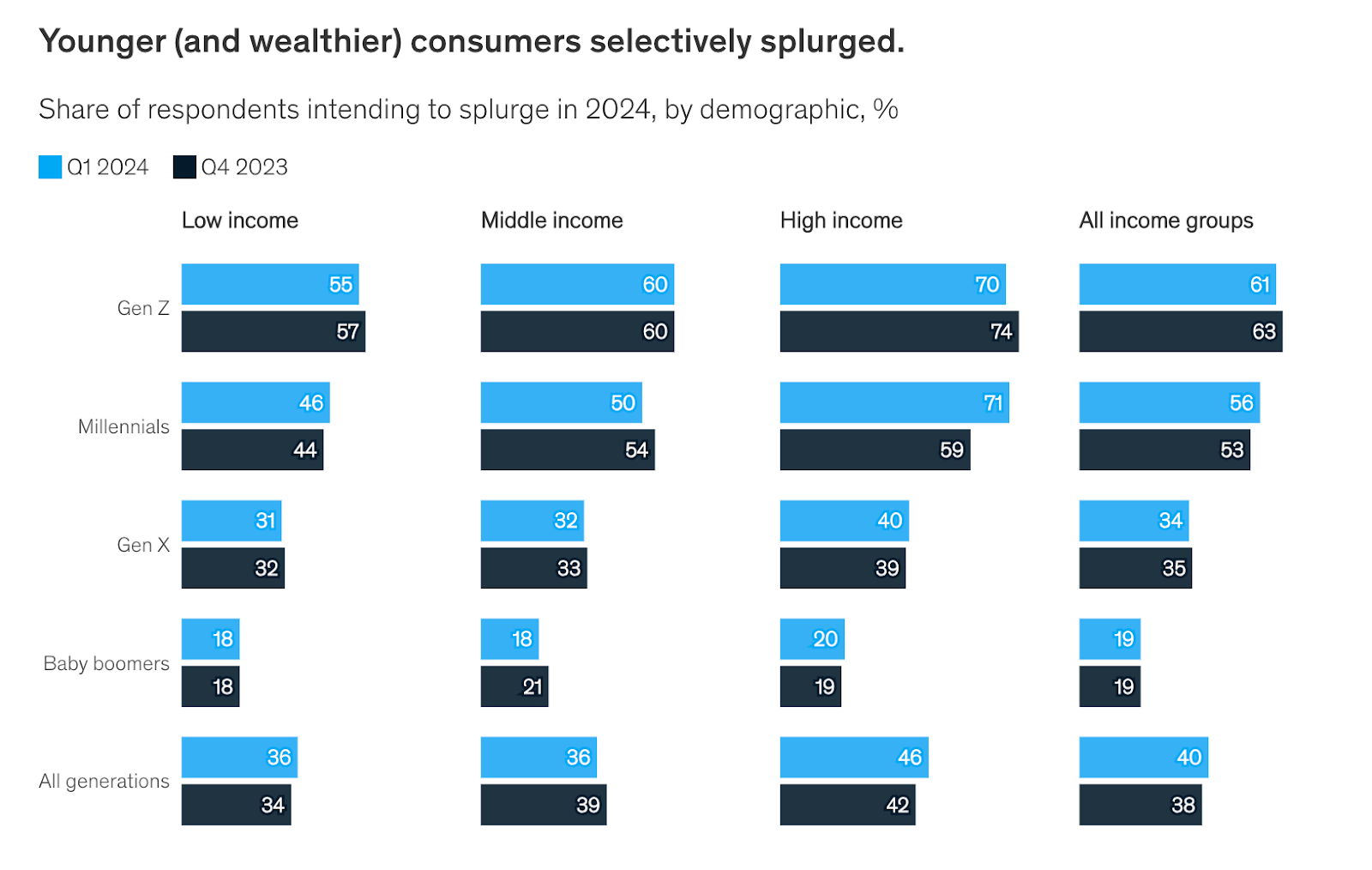
Gen Zers are generally pretty pessimistic about the future, and to combat that existential dread, many have adopted what the internet has deemed a “little treat” mentality: making emotional purchases to make themselves feel better. Atomik Research found that 58% of Gen Zers have a hard time saying no to impulse purchases, which can be anything from a drink at Starbucks to concert tickets.
A great way to take advantage of this impulsive behavior is by advertising flash sales and limited-time-only products that encourage customers to buy in the moment. This kind of advertising is especially powerful on social media; users are already open to being influenced on apps like TikTok, YouTube, Snapchat, and Instagram, where they’re also discovering new products all the time.
Despite their tendency to splurge, Gen Z is still facing the same financial pressures as other generations, like student loan repayments and inflation. According to a Bank of America poll, 73% of Gen Z said they planned to change their spending habits in response to inflation.
Still, brands that know how to tap into these consumers’ interests will find that they’re willing to spend on the right products. Many Gen Zers have a preference for lower-price and value retailers like T.J. Maxx, Costco, Target, and more, because they’re looking for good deals. Brands can appeal to this thriftiness by advertising major sales events and crafting messaging around the value of their products in comparison to similar items.
You also should explore opportunities to test into retail media networks (RMNs) associated with some of those low-cost retailers to ensure you’re getting your products in front of the right audiences and associate your products with Gen Z’s preferred retailers.
Even as they’re cutting down on spending in certain essential areas, Gen Z can be persuaded to spend on experiences. According to a Credit Karma survey, 38% of Gen Zers spent money they didn’t have on travel after being influenced by social media.
To persuade young consumers to spend those dollars with your brand, consider partnerships with influencers in that age range who can create aspirational content that appeals to Gen Z buyers.
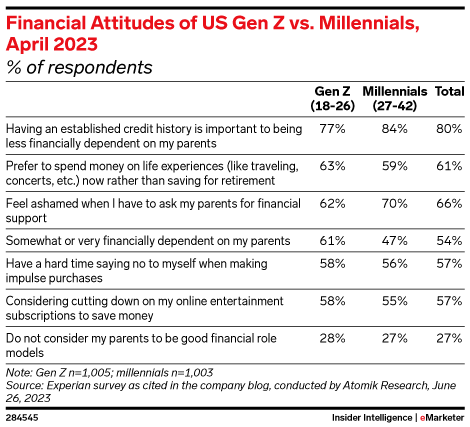
Gen Z critiques large retailers, but they’re still shopping there
Gen Z is a generation known for its social consciousness, especially around issues like sustainability and fast fashion. Because of those values, they’re often critical of large retailers like Shein, Temu, Amazon, and more. 65% of Gen Z respondents said they wanted to shop more sustainably and buy higher-quality clothing, according to a report from the resale platform ThredUp, and according to Mintel, 47% of Gen Z shoppers say they’re actively trying to shop less on Amazon.
This discomfort could give brands an opportunity if you’re looking for alternative ways to appeal to that cohort. You could consider messaging around shopping at alternatives to large retailers like Shein or Amazon or try reaching this audience in other places by branching out to burgeoning retail media networks like Target or Kroger or selling in stores.
But like all consumers, Gen Z doesn’t always behave the way it reports in surveys, and shopping behavior doesn’t lie: Piper Sandler found that 55% of teens said that Amazon is their favorite ecommerce site. Retailers like Shein and Amazon still seem to be go-tos for shopping hauls and get-ready-with-me (GRWM) videos across TikTok, Instagram, and YouTube.
Gen Z is absolutely still shopping at Amazon, despite criticism of the platform. If your brand is selling on Amazon, you should still look to appeal to Gen Z customers by targeting their interests and taking note of their overall purchasing tendencies, as well as looking for opportunities to drive purchases through Amazon’s new partnerships with social platforms and DSP capabilities.
Gen Z is looking for IRL experiences and cares about social responsibility
Despite being “digital natives,” Gen Z shops pretty equally both online and in-store according to ICSC. That might come as a surprise, but many young shoppers are looking for the instant gratification of getting a product right away, which makes brick-and-mortar stores or online stores like Amazon that offer same- or next-day delivery ideal. These customers also value the chance to see or try the products they’re buying live and in person.
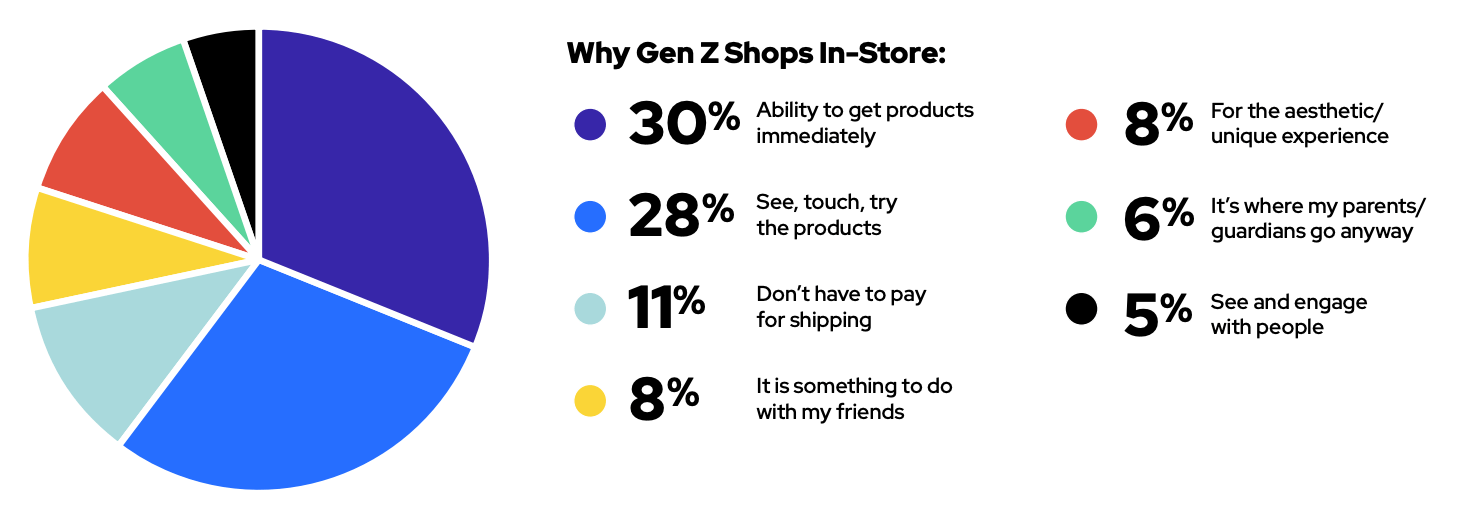
If your brand is currently selling online, you might want to consider some in-store or in-person activations to give Gen Z the valuable experience of trying before they buy. You can achieve that with short-term events like pop-up shops or in-person events and experiences, or through a longer-term partnership with a physical store, like the ones DTC brands like Quip and Harrys have formed with retailers to sell their products in their stores.
Gen Z also has strong opinions about social causes like environmentalism and a rebellious attitude toward Amazon, so they might be persuaded to switch brands by ads aimed at trying different ways of purchasing or choosing more sustainable or socially responsible options. If your brand has advantages like a low carbon footprint or supporting local suppliers, make sure to leverage those features in your advertising.
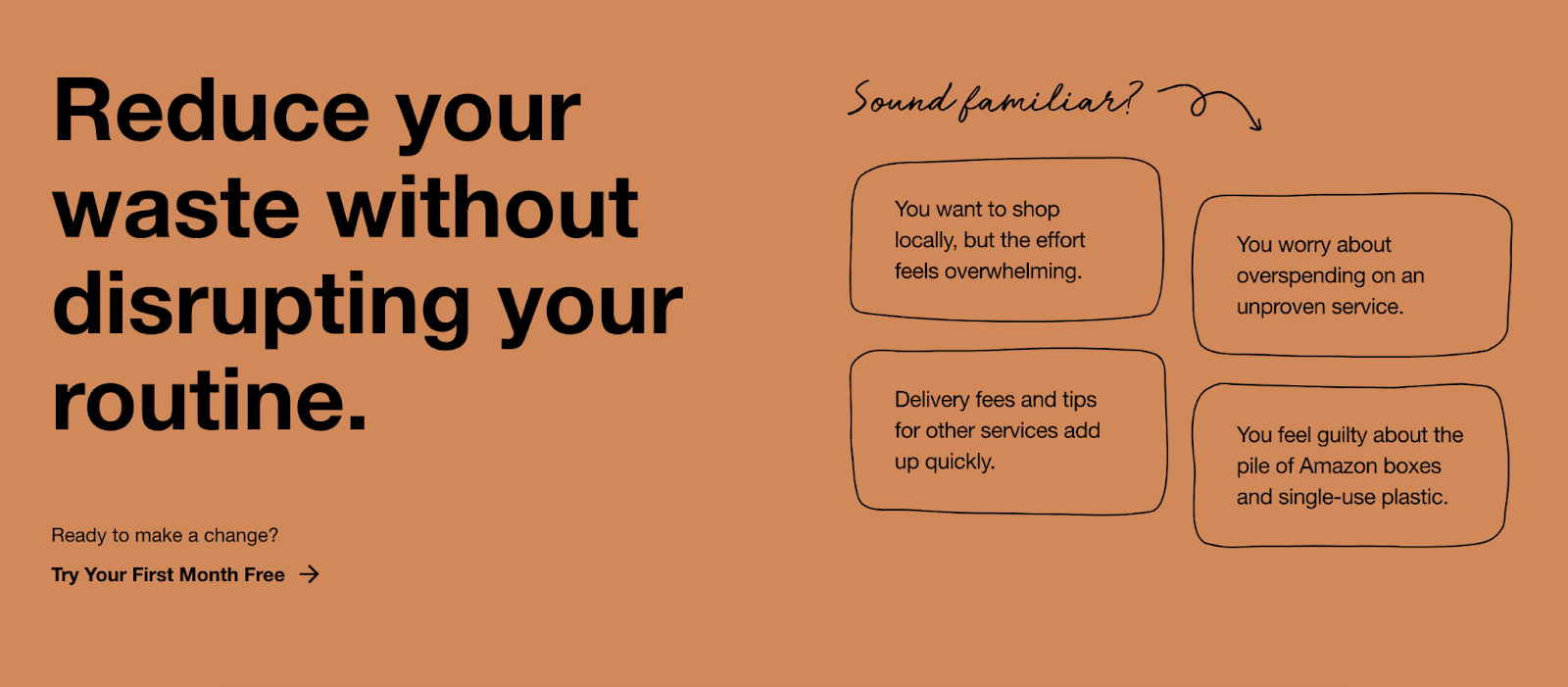
Gen Z values offline time more than you might expect from a chronically online generation. More and more Gen Zers seem to be putting their phones into Do Not Disturb mode, possibly to help curb the hundreds of notifications they receive each day. This is part of a larger trend toward seeking fewer digital disruptions.
Thanks to this mindset, Gen Z consumers appreciate less intrusive marketing tactics that prioritize mental health and consent. To respect your customers’ boundaries, make a point of giving them options when it comes to sharing their data with you by implementing first-party data systems and moving away from cookie-based tracking that makes your audience feel stalked across the internet by ads (something you should be doing anyway as cookies deprecate).
Be transparent about the data you’re using and entice consumers to share their information willingly by offering interactive content, great deals, or interesting experiences in exchange.
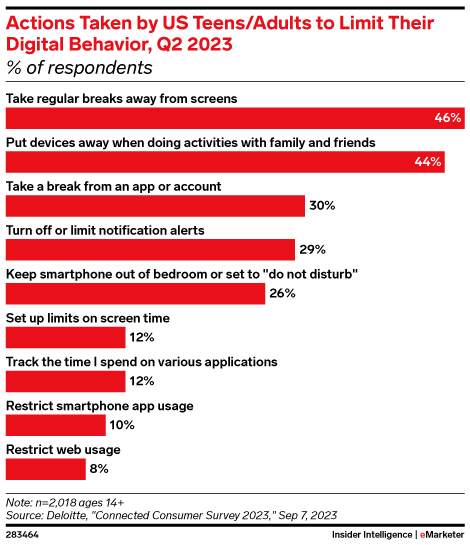
You should also make sure your brand isn’t sending too many text or SMS messages to your customers. Whenever you reach out with a marketing message, you’re interrupting your consumers and risking irritating them with a notification–so send fewer updates, and when you do make sure they’re worth their while by providing great creative and special discounts.
Keeping up with this contradictory and ever-changing generation can be a challenge, but it’s crucial to target Gen Z as their buying power grows in the coming years. If your team puts in the time to appeal to Gen Z’s interests, you have a chance to win big with the youngest adults.





